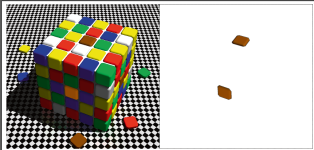Gregg
Well-known member
Looking for advice on how to explain to designers that we (the customer) have to accept some variance in color which is within industry standard tolerance. What is the best way to do that.
If I was to show them this, it would do no good:
Coated Stock
C 1.45(+/-0.08)
M 1.40(+/-0.08)
Y 1.05(+/-0.08)
K 1.80(+/-0.08)
Is there a way of translating the Delta E to something the designer would better understand? For example, could you say the Magenta may move shift up to 3%. Something like that?
I realize there are so many variables, and don't want this thread to turn into super tech talk. Just wondering if anyone has a simple and easily understandable way of letting the customer know that they can expect some color shift throughout the run of their project.
Thanks in advance.
If I was to show them this, it would do no good:
Coated Stock
C 1.45(+/-0.08)
M 1.40(+/-0.08)
Y 1.05(+/-0.08)
K 1.80(+/-0.08)
Is there a way of translating the Delta E to something the designer would better understand? For example, could you say the Magenta may move shift up to 3%. Something like that?
I realize there are so many variables, and don't want this thread to turn into super tech talk. Just wondering if anyone has a simple and easily understandable way of letting the customer know that they can expect some color shift throughout the run of their project.
Thanks in advance.












